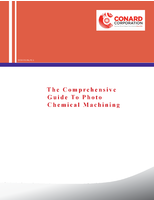Intel Extends Power-Saving Chipset to Embedded Systems
INTEL DEVELOPER FORUM, Taipei, Taiwan, Oct. 16, 2007 - Intel Corporation today announced extended lifecycle support for the Intel® Q35 Express Chipset for embedded and communications applications requiring graphics. The Intel Q35 chipset allows a 50 percent power savings over the previous-generation Intel® Q965 Express Chipset. With a 13.5-watt thermal design power, the chipset is ideal for low-power, small motherboard form factors for interactive clients, print imaging, digital security surveillance and network security applications, such as the 17x17cm Mini-ITX.
Debuting for desktop computers in August, the Intel Q35 chipset supports the newest Intel chipset technologies, including Intel® Virtualization Technology for Directed I/O (Intel® VT-d), version 3.0 of Intel Active Management Technology (Intel® AMT) and the new Intel® Rapid Recover Technology within Intel® Matrix Storage Technology for data protection.
"Embedded systems managers typically face the same risks and challenges associated with the enterprise, such as compromised security and system failures, which can be costly without remote management capabilities," said Doug Davis, vice president and general manager of Intel's Embedded and Communications Group. "Intel silicon combats these problems by enabling control over end devices independent of the software applications. We selected the Intel Q35 Express chipset because of the power savings and the native technologies built in, such as Intel AMT 3.0 and Intel VT-d."
A new technology built into the Intel Q35 chipset is Intel VT-d, which provides advanced remote management capabilities for I/O devices. The technology enables partitioning of I/O devices to virtual machines to distribute system resources and protect assets. Intel VT-d will improve performance by increasing the bandwidth and lowering the latency attributed to software virtualization. Industrial automation applications and network appliances are two key segments that could benefit from this technology.
The Intel Q35 chipset also supports the latest generation Intel AMT, which allows enhanced hardware-based isolation and recovery for embedded systems that go offline, and the Intel® Rapid Recover Technology, which allows embedded devices to recover data and return the system to an operational status in the event of hard drive failure or massive data corruption.
The Intel Q35 chipset with extended life cycle support is validated with two Intel® Core(TM)2 Duo processors: the Intel® Core(TM)2 Duo processor E6400 with Intel® Virtualization Technology and the Intel® Core(TM)2 Duo processor E4300. It is also validated with two new processors supported for an extended lifecycle: the Intel® Pentium® Dual-Core processor E2160 and the Intel® Celeron processor 440. The chipset may also be paired with future Intel 45nm processors.
The Intel Q35 chipset is available for embedded customers today in two versions of the I/O Controller Hub (Intel® ICH9 / ICH9 DO) starting at $37 (USD).
About Intel
Intel, the world leader in silicon innovation, develops technologies, products and initiatives to continually advance how people work and live. Additional information about Intel is available at www.intel.com/pressroom and blogs.intel.com.
Intel® Virtualization Technology requires a computer system with an enabled Intel® processor, BIOS, virtual machine monitor (VMM) and, for some uses, certain platform software enabled for it. Intel® Active Management Technology requires the computer system to have an Intel® AMT-enabled chipset, network hardware and software, as well as connection with a power source and a corporate network connection.




